In this article, we’ll go through how to manually and automatically disable the system restore option in Windows XP, Windows Vista, and Windows 7. Users can restore their computer’s settings to an earlier time by using the built-in System Restore feature of Windows operating systems.
Even while this feature can be helpful in some circumstances, there may be times when you want to stop it temporarily or permanently. We’ll go over how to manually disable system restore and offer automation techniques for a flawless process. So let’s get started!
What is a System Restore?
Users of Windows operating systems can return their computer’s settings to a previous state by using the System Restore feature. It creates restore points at regular intervals or before significant changes, such as installing new software or drivers.
These restore points act as snapshots of the system’s configuration, enabling the undoing any unintended modifications and returning to a functional state.
Why would you want to disable System Restore?
Although System Restore is frequently useful, there are a few circumstances in which you might want to stop it:
- Conserving disk space – System Restore needs a sizable amount of disk space to store restore points. Disabling System Restore can free up necessary storage if your disk space is low.
- Performance improvement – System Restore occasionally affects system performance, especially on older machines. Its disablement can enhance your computer’s overall performance.
- Malware removal – It can be challenging to thoroughly remove the System Restore files since certain malware can conceal itself there. Before performing a virus check, turn off machine Restore to prevent infected restore points from being added to your device.
Let’s look at the manual ways to disable System Restore now that we know the reasons to do so.
How can I disable System Restore manually?
Disabling System Restore in Windows XP
- Click Start and open the Control Panel.
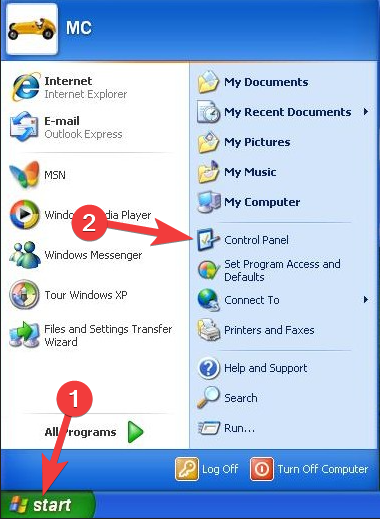
- Double-click the System icon and open System Properties.
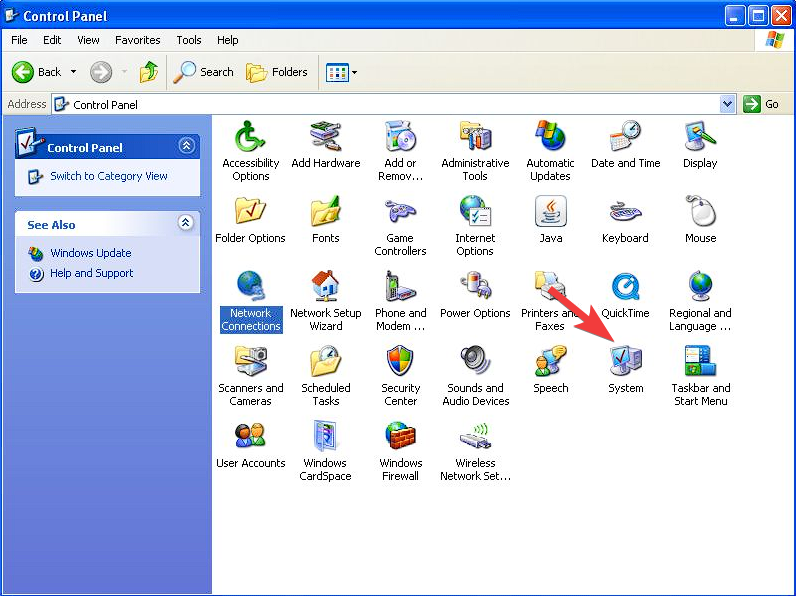
- Click the System Restore tab.
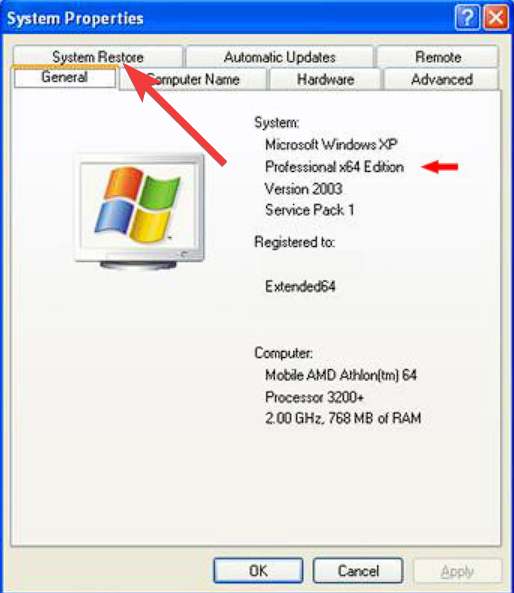
- Check the box next to the Turn off System Restore on all drives option, click Apply, and then OK.
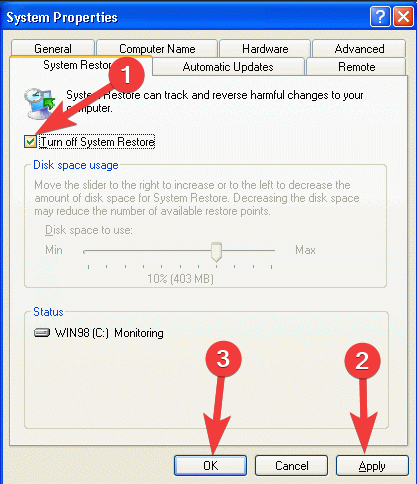
Disabling System Restore in Windows Vista
- Click on Start and choose Control Panel.
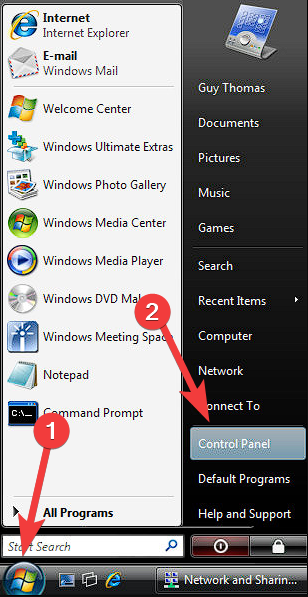
- Double-click the System and Maintenance option.
- Choose System to open this option.
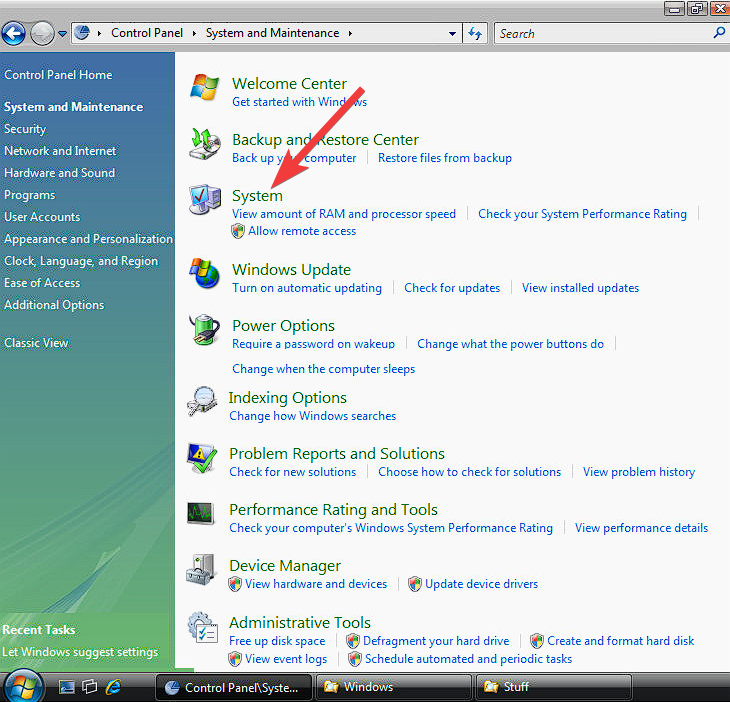
- Click on System Protection from the left-hand pane.
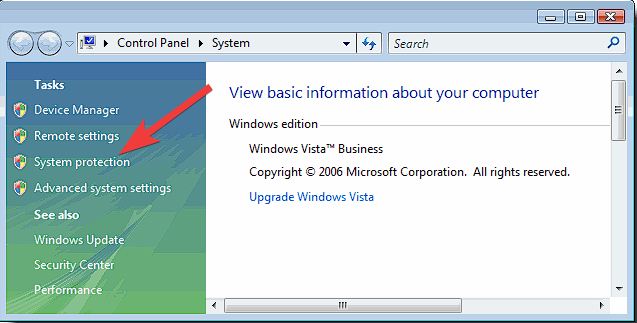
- Select the drive you want to disable System Restore, and click Configure.
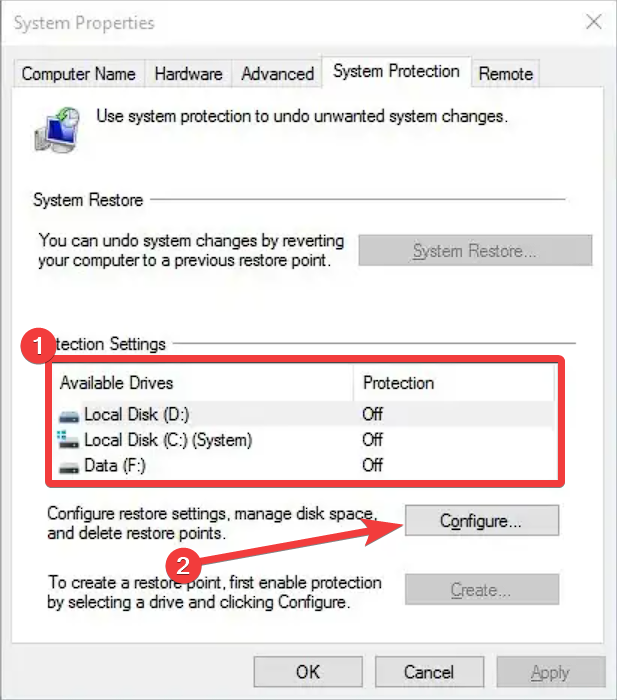
- Select the option that says Turn off system protection.

- Click Apply and OK to save the changes.
Disabling System Restore in Windows 7
- Click Start and choose Control Panel.
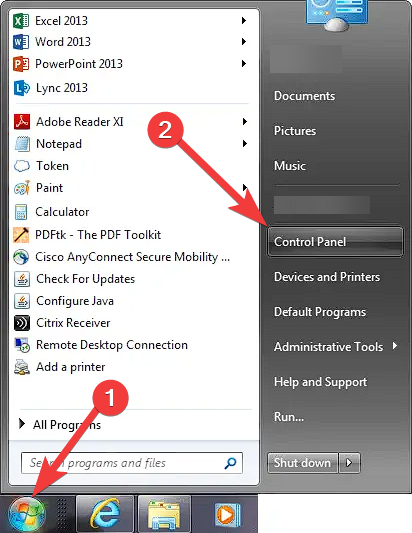
- Open the System and Security category.
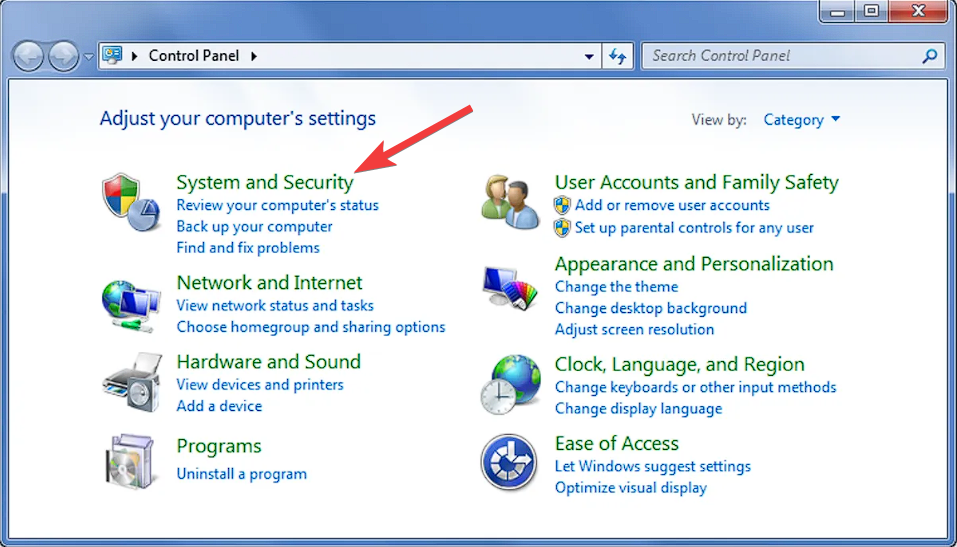
- Click on the System link and choose System Protection from the left side of the screen.

- Select the drive you wish you modify and click Configure.
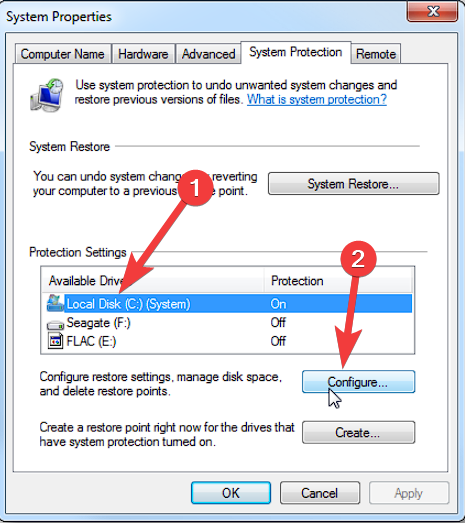
- Choose the Disable system protection option.
- Click Apply and then click OK.
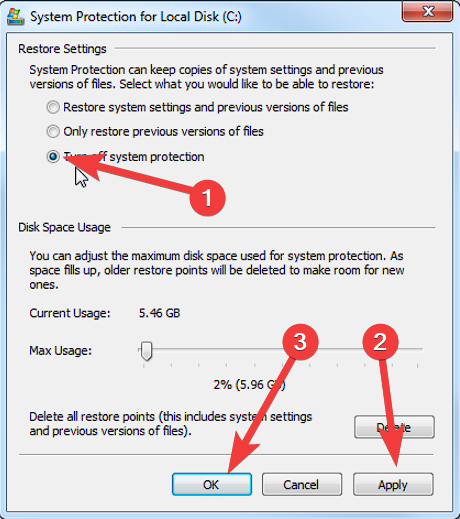
How can I automate the System Restore disabling process?
While manually removing System Restore is simple, disabling it over a network or on several PCs can take some time.
Fortunately, automated techniques let you rapidly turn off System Restore. Let’s look at a few of these techniques.
1. Use Command Prompt
- Press the Windows key + R to open the Run dialog box.
- Type cmd and press Enter to open the Command Prompt.
- Type the following command and press Enter:
wmic.exe /Namespace:\\root\default Path SystemRestore Call Disable - Once the command executes successfully, System Restore will be disabled on your computer.
2. Use the Group Policy Editor
- Press the Windows key + R to open the Run dialog box.
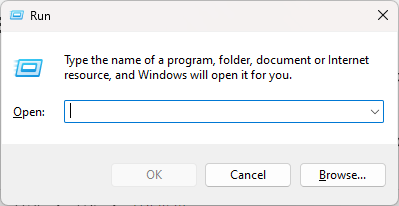
- Type gpedit.msc and press Enter to open the Group Policy Editor.
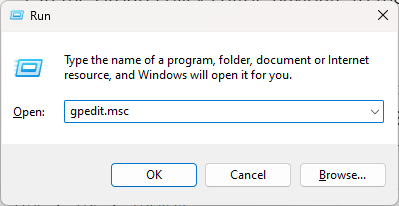
- In the Group Policy Editor, navigate to the following path:
Computer Configuration > Administrative Templates > System > System Restore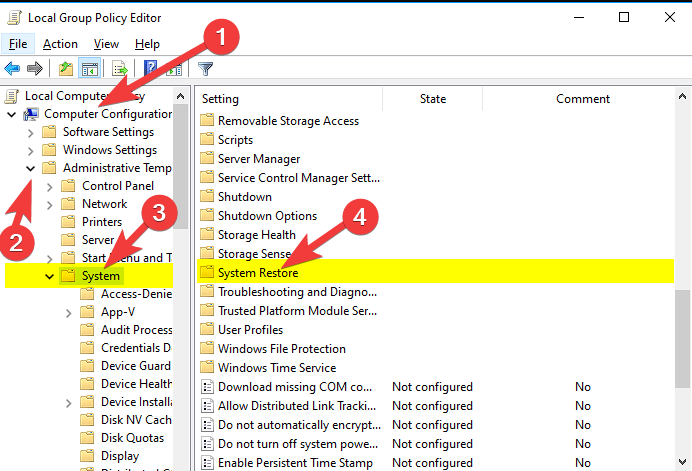
- Double-click on the Turn off System Restore policy.
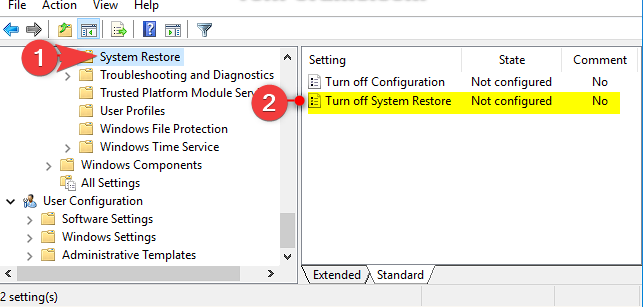
- In the policy settings window, select the Enabled option.
- Click on Apply and then click OK to save the changes.
3. Use the Registry Editor
- Press the Windows key + R to open the Run dialog box.
- Type regedit and press Enter to open the Registry Editor.
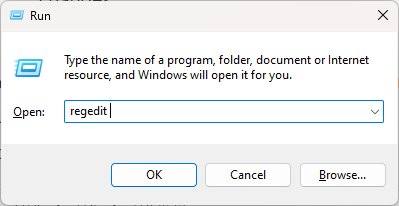
- In the Registry Editor, navigate to the following path:
HKEY_LOCAL_MACHINE\SOFTWARE\Policies\Microsoft\Windows NT\SystemRestore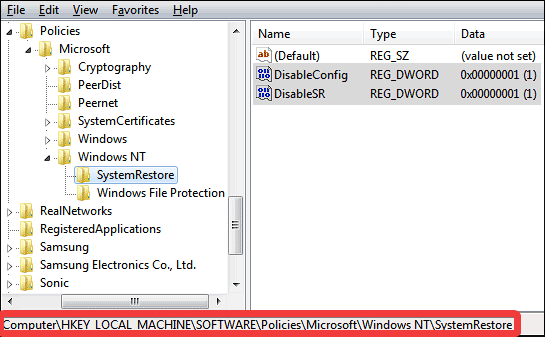
- In the right-hand pane, double-click on the DisableSR DWORD value.
- Change the value data from 0 to 1 and click OK to save the changes.
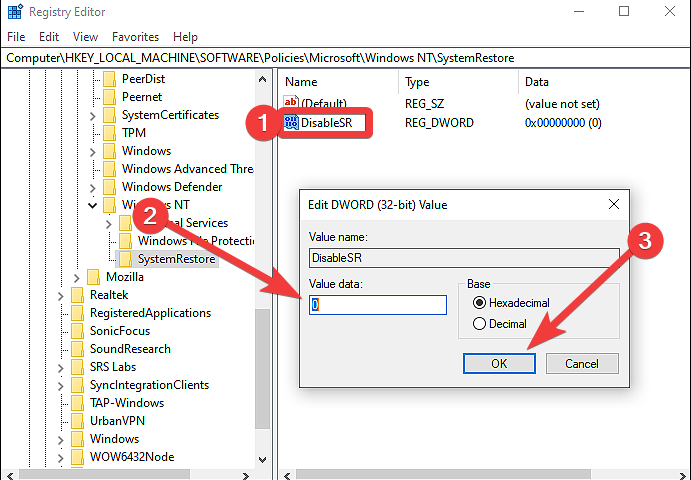
- Close the Registry Editor.
You may quickly disable System Restore on numerous computers using these automated techniques, or you can speed up the procedure for your company.
In this post, we looked at the manual and automated methods for turning off System Restore in Windows XP, Windows Vista, and Windows 7.
We reviewed possible justifications for disabling System Restore and offered detailed instructions for manual and automatic approaches.
Before turning off System Restore, consider applying these techniques cautiously and consider the consequences. For system recovery and troubleshooting, System Restore can be a helpful tool.

Vladimir Popescu
Verified at:
07/03/2023 10:31
Vladimir started writing articles about Windows because he has a natural interest in this topic, and he has been an avid professional user with more than 15 years of experience. He’s also been writing for WindowsReport.com, MSPoweruser.com and present in various other online publications on matters related to Windows and Windows servers.
Vladimir enjoys practicing Crossfit and making art when he’s not creating top articles with in-depth information.


Leave a Reply